Photo credits: ABC
Early Life and Origin
Mamie Till-Mobley’s (born Mamie Carthan) 1921 birthplace was in the state of Mississippi.
Her parents relocated to the suburbs of Chicago, Illinois, while she was just two years of age. Carthan’s life was affected by the Great Migration. She returned to Mississippi to see her relatives during the summer months. Her mother’s house was packed with warmly invited relatives from the South who sought guidance on obtaining a good living for the remaining annual periods.
Carthan married Louis Till following her high school graduation. She finished with a GPA, which was close to the top of her graduating class. They had a boy named Emmett, which was the couple’s only child. Mr. Till turned out to be an abusive individual. Mrs. Till leveled a court injunction at her violent husband when Emmett was still an infant. Mr. Till was forced by a judge to make a choice — imprisonment or military duty. He opted to join the military.
Louis Till died in July 1945. The U.S. Army provided Mrs. Till with her late husband’s sole personal possession, a ring bearing his initials. Mr. Till received a death sentence for murder and rape, which was a shocking detail Mamie found out about afterward. She practically never mentioned him after that. She preserved the ring, however. She thought he would want it to be in Emmett’s possession.
Emmett Till’s Early Teenage Years
Emmett matured into a respectable adolescent when 1954 came around. Emmett prepared meals and kept the household clean himself. His mother spent lengthy workdays performing the duties of her secretarial job. For maintaining his duties so well, Mrs. Till got her son a new suit for Christmas of 1954.
After he tried it on, the well-dressed mother and son took a regal-looking photo together.
Mrs. Till’s uncle Moses asked if Emmett could spend two weeks on his Mississippi ranch the next summer. She consented to let her son leave after a thorough discussion with him. Mississippi was not the same as Chicago. Despite the fact that racism prevailed in each region, the regulations targeting Black people in the South were much tighter. Mrs. Till urged her son to stay away from whites.
At 14 years of age, Emmett knew why. He packed his father’s ring so he could exhibit it to his southern relatives. The well-mannered teen embraced his mother for so long, he almost missed his train to Mississippi.
The Tragic Terror of Racism Strikes
Mrs. Till awoke to the loud ring of a telephone call she received a week later. It was one of her cousins. She was told some very frightening news. Emmett had been kidnapped during the late-night hours by a mob of angry armed white males.
Emmett and his young relatives went to a storefront several days before to buy candies. Carolyn Bryant, a white lady, managed the business. According to legend, Emmett whistled as he sat on the store’s patio. Despite the fact that Emmett’s whistling was not intended for anybody, the youngsters ran away prior to Bryant’s recollection of anything else.
The boys did not want care to convey to anyone that Emmett was whistling. Bryant exaggerated and said Emmett had done more than just whistling, at that point. She claimed he allegedly invited her to date him before grabbing her waist. However, according to Emmett’s cousins, Bryant’s claims were completely untrue.
Mrs. Till, along with her relatives, made every effort to locate Emmett. Telegrams were sent to local news outlets and the NAACP — as well as the U.S government’s headquarters in Washington D.C.
Municipal law enforcement officials intended to bury Emmett as soon as possible. Mrs. Till sought the assistance of a Black-owned mortuary in Chicago. Plans were ultimately made to bring Emmett home after successful talks with a Chicago congressman. Mrs. Till insisted on seeing Emmett’s terribly disfigured face and corpse at the funeral home.
The head mortician paused for a moment. Unless Emmett’s coffin remained sealed, Mississippi officials said they would not consent to transfer his remains. However, his mother was unconcerned.
“Let the public see what they did to my boy,” she thought while staring at her deceased son.
A Mother’s Pursuit of Justice Reveals the Truth
Mrs. Till ultimately demanded that her son’s coffin remain open. Throughout a four-day period, about 100,000 individuals witnessed Emmett’s body. The majority of Black Chicagoans seemed to pledge their allegiance. Mrs. Till was someone to whom a whole host of them could connect with.
Like Mrs. Till’s family, they also made the journey northward to escape racial oppression. Not only that, but many of those Black Chicagoans were also equally concerned about the safety of their family members who lived in the South. The grieving community members shared Mrs. Till’s feelings of helplessness when it came to mutual attempts to safeguard their young boys and girls.
Mrs. Till gave permission for a photojournalist who worked for Jet Magazine to take pictures of Emmett’s corpse and release them in a future publication. Jet, as well as a handful of Black-owned newspapers, published images of Emmett’s remains — -regardless of the fact that all the mainstream print-based news sources in the nation covered his funeral. The haunting photos were well-known to African Americans.
However, at that time, most of white America was still oblivious to the Till tragedy.
White American Racism on Trial
Authorities arrested and charged the white female claimant’s husband, Roy Bryant, as well as his half-brother, J.W. Milan, with Emmett’s gruesome homicide. An exhibit at their subsequent trial showed that Milan’s property provided physical evidence, which was linked to Emmett’s corpse.
Bryant and Milan were the pair of hostile white men who showed up at the farmhouse seeking Emmett, according to testimony made by Mrs. Till’s uncle named Moses. However, at the time, one could surmise that an all-white Mississippi jury was not considering the testimony of any witnesses summoned by the prosecutor — or any of the state’s concrete proof.
Emmett’s open-to-the-public burial ceremony garnered a plethora of notoriety for the Bryant-Milan murder trial. Civil rights leaders and journalists from all over the U.S. converged on the small Mississippi municipality. On the witness stand, Emmett’s mother did everything she could to behoove jurors and gain their favor. To keep them from thinking she was hostile, Mrs. Till refrained from looking the white male defendants in their eyes.
Emmett’s mother also abstained from weeping —- she refused to give jurors the chance to see any sign of weakness within her.
During cross-examination, an attorney representing the defendants attempted to find flaws in Mrs. Till’s testimony. He accused her of misidentifying her own son’s body. He chastised for cautioning Emmett in regard to racism in Mississippi. The defendant’s attorney insinuated that Emmett’s probable obnoxious nature was the reason Mrs. Till warned her son about whites in the South. Nevertheless, she remained composed and collected on the witness stand.
After deliberating for around 60 minutes or more, jurors found Bryant and Milan to be “not guilty” on all counts. This gross miscarriage of justice occurred on September 23, 1955. Mrs. Till was unable to witness the final decision play out in court. However, she anticipated an acquittal of injustice. She was simultaneously leaving Mississippi anyway to avoid a violent reprisal —- just in case the white defendants were miraculously convicted.
A Movement’s Rallying Cry Springs Renewed Calls for Action
Mrs. Till appeared on a pavilion platform in front of 10,000 friendly spectators in New York City’s township of Harlem on September 25, 1955.
The Harlem rally was organized by civil rights icon A. Phillip Randolph. Randolph gave a speech that touched on the incorrigibly bad verdict. The centerpiece, however, was Mrs. Till’s emotionally riveting statement before the crowd.
Reinvigorated, she embarked on a campaign with the NAACP. The organization planned a sequence of rallies to commemorate Emmett’s life. Mrs. Till traveled to over 30 cities in over 20 states throughout October 1955. She announced to the spectators that she was not depressed anymore. Before cheering crowds, she said she was “just plain enraged.”
Emmett’s tragic end erupted the galvanization of Black America — behooving its oppressed citizens to intensify their fight against racially motivated genocide.
A watershed moment in the U.S. civil rights movement had reached an alarming threshold. However, as esteemed American author, Ernest Hemmingway famously wrote: “One must not mistake movement for action.” Mrs. Till grew very fatigued by the conclusion of the month-long tour.
However, a subsequent tour was organized by the NAACP.
Givers and Takers: When Loyalty Begets Betrayal
At this critical point, Mrs. Till conjured up some additional requests for the NAACP. She wanted her father to accompany her to boost family morale. She also requested more funding because she was unable to maintain her job and campaign simultaneously. These reasonable requests enraged the NAACP’s Executive Director.
He labeled her as being motivated by greed instead of advocacy. Afterward, Mrs. Till issued an apologetic statement to the NAACP in an attempt to reconcile —- even though she made a reasonable request — in lieu of her growing participation during a demanding national campaign. In any case, the death of Emmett Till created a fait accompli for his mother.
By default, Mrs. Till had become a nationally renowned social justice activist who advocated against the racial oppression of Black Americans.
However, by nature, she was a grieving mother who lost her son to racism and merely wanted to assist the NAACP’s national agenda on behalf of her fellow ethnic people. In her statement of apology, she also promised to raise her own campaign funds and insisted that her affairs would be in order for the purpose of continuing the speaking tour.
Nonetheless, the NAACP’s national leadership rejected her apology and canceled the pending speaking tour.
Mrs. Till’s acts preeminently burgeoned America’s civil rights movement —- regardless of the fact that she was maligned by the NAACP. A fledgling, racially diverse, and a large cross-section of U.S. citizens grew flippant over her son’s murder. Furious petitions seeking action were mailed to governing authorities across the U.S.
Pivotal figures, such as Rosa Parks, Dr. Martin Luther King, Jr., and John Lewis would later cite Emmett Till’s burial as a defining moment in Black America’s battle against human rights violations.
Late Life and Infinite Legacy
Mrs. Till was able to digest the sorrow by speaking out about her son’s tragedy. She was accepted to study at the Chicago Teachers College in 1956. She married Gene Mobley, a longtime boyfriend, in 1957.
The reinvented Mrs. Till-Mobley earned her bachelor’s degree in 1960. She was employed as a teacher for over 20 years. In 1983, Mrs. Till-Mobley retired from her teaching profession.
Emmett’s life saga was included in a big-time PBS-backed film, which was released in the late 1980s. For a first-ever occasion, White America witnessed the photos of Emmett Till’s mutilated remains. His mother’s voice was eagerly awaited by the populace in the court of public opinion.
She gave her all to endorse this poignant moment in TV and cinematic history. Mrs. Till-Mobley remained obliged —- in the acceptance that telling her son’s story was an eternal component of her legacy — while living on Earth and the afterlife. On January 6, 2003, Mamie Till-Mobley succumbed to cancer at 81 years of age. Her official autobiography was released the year she passed away.
Mrs. Till-Mobley revealed in her literary gift of advocacy that minute by minute, thoughts of her beloved son crossed her mind until her dying day.
Reference
Editors, NYHistory.org (2021, June 24). Life Story: Mamie Till-Mobley. Wams.nyhistory.org. https://wams.nyhistory.org/growth-and-turmoil/cold-war-beginnings/mamie-till-mobley/#resource











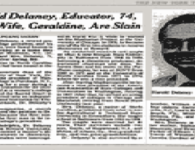
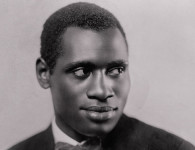

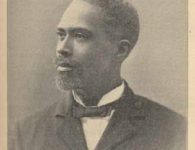

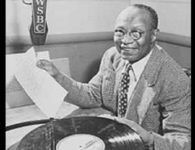
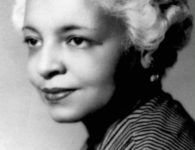



No comments